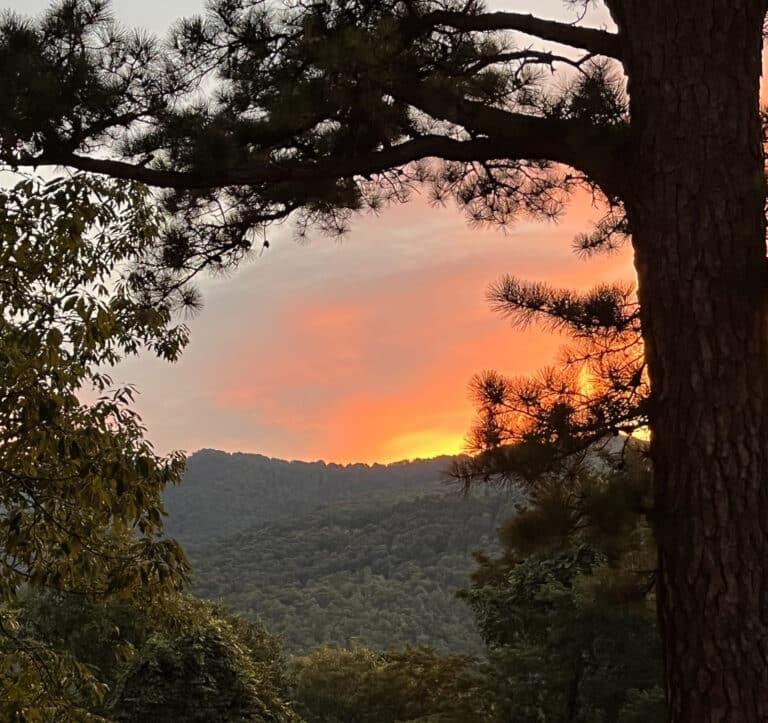Meet five all stars who left a lasting impact on the outdoor scene in 2008.
Lady in the Water
KATIE SPOTZ
Instead of celebrating her college graduation with parties and a carefree summer, Katie Spotz became the first person to swim the entire 352-mile Allegheny River. The month-long swim through upstate New York and Pennsylvania benefited Blue Planet Run Foundation, a charity that works throughout the world to help communities gain access to clean drinking water.
Spotz has already proven she is up for an adventure. In 2006 she biked across the U.S. to benefit the American Lung Association in memory of her grandmother.
“I’m always looking for new ways to challenge myself,” she says. “I love the mental challenge of any endurance sport.”
For her latest endeavor, which started on July 22 and ended on August 21, Spotz took inspiration from Martin Strel, who swam 2,360 miles of the Mississippi River in 2002.
Spotz had to walk the Allegheny’s first 27 miles, because the water was too shallow. For the next 325 miles, she swam for six to eight hours a day. The first three weeks were relatively peaceful, but during the last 70 miles she had to contend with a lot of boat traffic and minimal currents, which slowed her pace. She also scuffled with downed trees and shallow sections that banged up her knees.
“My wetsuit was pretty rugged by the end of the month,” she says.
Her friend James Hendershott followed her for safety and support in an inflatable kayak that was big enough to hold gear and food. Nights were spent camping on the Allegheny banks.
Before setting off on the epic swim, the longest distance Spotz had previously swum was four miles. Despite a lack of experience and no training, her body adjusted quickly. She attributes her success to mental perseverance, something that is required to be able to stare into cloudy water eight hours a day for a month.
“The first week there were some major endorphin highs and energy-depleting lows, but after that, my body easily adjusted,” she says. “I have this kind of animal drive. When I want something, I don’t see anything else. It’s a peaceful and fulfilling thing to know that your body can endure. People are not aware of what their bodies are capable of because life is so easy. I don’t think I am special. Anyone can do these things if their mind accepts the challenge.”
To follow up the Allegheny, Spotz has an even bigger body of water in her sights. Next year she plans to row across the Atlantic Ocean as another benefit for Blue Planet. With a spirit for endurance and a heart for charity, it seems there is little to stand in her way.
“It’s mind-boggling that 1.1 billion people right now don’t have access to clean drinking water,” says Spotz. “That’s the most basic human need.”
Cycling Savior
WILL FRISCHKORN
With the lack of Lance and the shame of Landis, Americans had little to be excited about heading into this year’s Tour de France. But in stage 3, the red, white, and blue was given a day of exciting headlines thanks to Will Frischkorn, a 27-year-old utility rider on the outspoken, daily-tested anti-doping squad Garmin-Chipotle. Frischkorn, who grew up in Charleston, W.Va., and trained extensively as a high school student in Charlottesville, Va., was in 122nd place going into stage 3. But by the end of the day he was in third, the result of a gutsy performance that earned worldwide buzz and found him leading for more than 200 kilometers before just being edged out at the end by veteran French rider Samuel Dumoulin. Frischkorn, a strong all-around support rider, ended up helping two of his teammates finish in the Tour top 20. But for one day, he stood on the podium and was donned the day’s Most Aggressive Rider.
“The Tour is the dream, and to be a part of a team that played an active role in the race was really exciting,” he says.
Man on the Run
MICHAEL WARDIAN
Michael Wardian spent the year dominating the professional ultra-running scene. The Arlington, Va.-based runner won three USATF titles, including the 50-mile Trail Championship and the 50K and 100K Road Championship titles. At the 50K in Crystal Mountain, Wash., he set a championship record with a 2:55:05. His performance at the 100K in Madison, Wis., earned him a spot on the World Team and a chance to compete for the U.S. at the 100K World Championships in Italy this month.
The amazing thing about Wardian is not only his consistent winning (he hasn’t lost an ultra that he’s entered in over a year), but also his tireless running ethic. In addition to competing in a total of six ultras this year, he also ran 13 marathons—including two on consecutive days in March. He won the National Marathon in Washington, D.C., with a 2:24:59, and then he hopped on a plane to Tennessee and ran the Knoxville Marathon in 2:29:50, placing third after leading for 24 miles. This year in total he ran over 50 races of varying distance. Critics wonder how fast Wardian could be if he actually tried to take some proper recovery time, but he is more interested in just testing his limits.
“I like to see how far I can push myself and see what I can accomplish,” he says. “People think it’s crazy, but now they’re not trying to curb what I’m doing as much because I’ve had good results. What works for me doesn’t work for everyone.”
Wardian also likes an unconventional challenge. He previously held the fastest time for a marathon on a treadmill, and last year he set the record for running a marathon with a stroller—a feat he shares with his son, who was along for the ride at just 10 months old. Wardian’s only big disappointment this year came when he was trying to recapture the treadmill record. He was on a 2:18 pace for 22 miles, but he ended up in the hospital with exhaustion before he could finish.
“I wasn’t taking in enough fluids,” he says. “You have to take your body seriously, so it was a good learning experience.”
Next year Wardian, who works full-time as a ship broker for Potomac Marine International, will look to win the Marathon des Sables, the 150-mile stage race through the Sahara Desert, and the Comrades 54-mile ultra-marathon in South Africa. He’ll also be looking to defend his USATF championship titles. One thing that might decrease his race traveling is the birth of his second child this December.
“I promised my wife I would scale it back,” he says. “But I like to show people that you can compete on an elite level with a full-time job and a family.”
Best of the Barkley
BRIAN ROBINSON
The Barkley Marathon is ultrarunning’s underground nightmare. Heading into 2008, only six runners in 21 years had finished the 100-mile course that bushwhacks through the rugged mountains of Tennessee’s Frozen Head State Park. The 100-miler consists of five 20-mile loops and a total elevation change over 100,000 feet. Sections of the course are so steep that runners often have to pull themselves up by trees. Other sections are overgrown with thorn bushes. Then there’s the quirky sadism of race director Gary Cantrell, who makes runners tear pages from books left along the course to prove they’ve covered all 20 miles. Last year Cantrell put one of the books at the opening of a rattlesnake den. These collective obstacles get the best of some of the world’s toughest ultrarunners; many don’t make it past the first loop.
But this year Brian Robinson became the seventh person to finish the Barkley. He also set a new course record—finishing in 55 hours and 42 minutes.
The third time was the charm for Robinson. During his first Barkley attempt two years ago, he ran in the 60-mile “fun run” category and finished seven minutes past the cut-off time. Last year he was the only racer to start a fifth and final loop, but sleep deprivation forced him to call it quits.
“I couldn’t move fast enough to stay awake,” he recalls. “I got into zombie stumble mode and had to quit a quarter of the way into the loop.”
But this year Robinson learned from his mistakes and came into the race with a new strategy—sleep. He forced himself to take two hour-and-a-half naps, even when he wasn’t tired. The rest made him more efficient on the rugged course.
“The sleep strategy was key, because I was able to go faster in the later loops,” Robinson says. “The time I lost was paid back with interest.”
Six years ago Robinson left a high-paying job in Silicon Valley to have more time to pursue his endurance passion. In 2001 he became the first person to finish the Triple Crown of hiking, which included completing the Appalachian Trail, Pacific Crest Trail, and the Continental Divide Trail, a total of 7,400 miles, all in one year. He now seeks out some of the toughest ultra-marathons and endurance challenges.
“I basically took a plan B life—left a high-stress job and walked away from a big paycheck,” he says. “I’m satisfying the wanderlust in me. I’m taking the path less traveled, and it’s making all the difference.”
Paddling Prodigy
LAUREN BURRESS
At just 12 years old, Lauren Burress already has her sights on the Olympics. This year the whitewater wunderkind from east Tennessee won the Freestyle and Slalom Kayaking Junior Nationals.
Burress was drawn to freestyle paddling at age 6. She was on a whitewater rafting trip with her mom on the Elkhorn River in Kentucky, and her dad was paddling nearby with friends in play boats. During a break, Burress ran over to the kayakers and jumped into one of the boats with her dad’s friend—experiencing her first surfing hole. By age 8 she was running the Big South Fork River in Tennessee, and at 9 she participated in her first Teva Mountain Games.
“We would get a lot of heat from people for letting her paddle the Big South Fork at such a young age,” says Lauren’s mom, Kathleen. “But we always had big groups of experienced people with us, and she easily progressed.”
Not yet a teenager, she is already competing on the professional level. She recently finished second in the pro women’s category of a paddling comp in Glenwood Springs, Colo.
“It’s a sport where you can be yourself,” says Burress, when asked what she likes about paddling. “I like that you can still progress at any level from beginner to expert.”
In one competition this year, she was too good for her age. Her performance at the Slalom and Freestyle Junior Nationals qualified Burress to compete at the World Cup in Europe. But four days before she was supposed to get on a plane, she was notified that she had to be 15 to compete in the junior division.
Burress, who just moved to paddle full-time in Colorado, will focus on pro categories next year, because—strangely—they don’t have a minimum age requirement like junior categories. She’s looking to compete in the U.S. Team Trials at Glenwood Springs in May. While it’s currently being debated whether freestyle paddling will be an Olympic event in London in 2012, Burress is keeping her fingers crossed.
“I really want to be an Olympic medalist,” she says. “Hopefully freestyle will get in and that will work out.”










